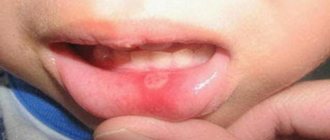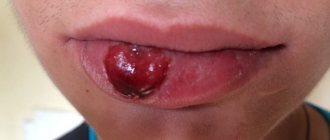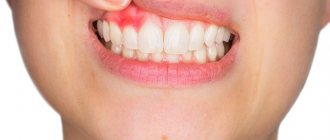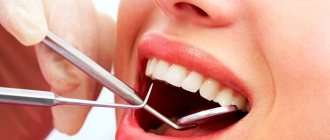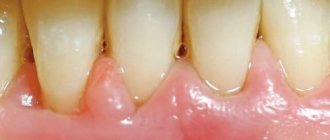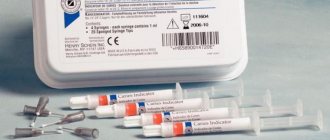Human diseases and their psychological prerequisites
Illness indicates a person’s discord within himself and in his relationship with the Universe. Disease is a specific way of the body to protect us from our own destructive thinking. To cure nervous diseases, you need to change your thinking and behavior.
The connection between soul and body was noted by Socrates, but psychosomatics as an independent direction arose in 1818. This year, the German doctor Heinroth was able to officially prove the connection between diseases and stress. Since then, the psychology of diseases has been actively developing, but the basic classification of psychosomatic diseases remains the same as hundreds of years ago.
Classification of psychosomatic disorders
It is customary to distinguish psychosomatic reactions and psychosomatic disorders:
- Psychosomatic reactions are short-term and situational in nature: redness from shame, sweaty palms, hoarse voice, goosebumps, loss of appetite, etc.
- Psychosomatic disorders are persistent in nature and are manifested by dysfunction of systems or organs.
Violations, in turn, are divided into three groups:
- Conversion symptoms. Unpleasant emotions result in real bodily manifestations: a feeling of a lump in the throat (frozen resentment), numbness of the limbs (fear), deterioration of hearing or vision (unwillingness to see or hear something).
- Functional syndromes. Pain appears, but the physiological reasons for this are not diagnosed: VSD, cystalgia, lumbodynia, cephalgia.
- Psychosomatosis. Both symptoms and real disorders in organs are noticeable: hypertension, ulcers, asthma, neurodermatitis, colitis, arthritis, diabetes, hyperthyroidism, etc. These diseases require an exclusively comprehensive approach to treatment and diagnosis: medicine + psychology.
This is interesting! Initially, only 7 diseases were classified as psychosomatosis (Chicago Seven), but the list was constantly updated and updated. Today it is recognized that stress is a prerequisite for any physiological disorder.
Predisposition to disease: body signals
Pain is the body's best way to hint at psychological problems. But you should pay attention to the area where the pain occurred:
- head – stress, overwork, anxiety;
- neck – resentment, suppressed emotions, prohibition of self-expression;
- breast – lack of support, imposing one’s care on others;
- shoulders – pressure from others, emotional exhaustion;
- lower back – experiences associated with money and material values;
- stomach - inability to accept something, come to terms with the situation;
- elbows – rigidity;
- brushes - lack of friends;
- hands - unloved work;
- palms - fear of loneliness;
- pelvis – fear of leaving your comfort zone;
- knees - excessive selfishness, egocentrism;
- shins - jealousy;
- ankles - self-destruction, inability to rest and relax;
- foot – apathy, fear of the future.
When psychodiagnostics, it is important to take into account not only the severity of symptoms and the place of their manifestation, but also the side of the body. In psychosomatics, the right side is responsible for male energy, and the left for female energy.
The two main causes of diseases that everyone knows
With the loss of water, we begin to get sick and grow old. A decrease in water in the body is a companion to aging and loss of vital energy. Water deficiency is a sign of old age and illness
Like 2
3447
The first reason is dehydration.
Many people know that our body consists of 80% water. But not everyone understands how important it is to supply it with water, and not to naively assume that tea, beer and soup are quite enough.
Why do diseases occur when there is a lack of water?
Health, long life and active aging are a high rate of metabolic processes. The metabolic rate decreases - we get sick, grow old, and fade rapidly. Why is this associated with water and not tea and other drinks?
- 218
More details - 216
More details
- 540
More details
- 1128 1056
More details
Because 85% of metabolic reactions take place in water, and not in the mentioned and other solutions. And, if there is not enough water, including a whole cascade of reactions, as a result of which a range of substances are produced that slow down and change the normal course of metabolic processes. This disrupts the functioning of all body systems - immune, endocrine, etc.
Ailments begin and diseases are provoked. That is, water deficiency in the body causes multisystem dysfunction of the entire physiology of the body, and severe metabolic complications.
It is this circumstance - water deficiency - that prepares the body for the complete abandonment of some important functions, causing first a change in the chemical composition of the body, and then significant structural and physiological changes, which we call disease.
A dehydrated body loses its flexibility and ingenuity in the fight for its healthy existence. What is interesting is that chronic unintentional dehydration of the human body can manifest itself in a number of ways that exactly corresponds to the number of diseases invented by medicine.
What exactly happens if we don't drink water?
When there is a shortage of water, less nutrients enter the body's cells and less energy is produced. And, what’s even worse, up to 83% of toxins are collected in MP, which pollute it and “acidify” it, creating unbearable conditions for the life of cells; they begin to get sick and die, and some in this acidic environment degenerate into cancer. Don't be surprised by the increase in cancer patients!
When there is not enough water to ensure the normal functioning of all organs, it is taken from the general blood and lymph circulation system. Naturally, with a decrease in blood volume, the body, in order to maintain the required pressure in the system and the uninterrupted operation of all organs, is forced to narrow the vessels and capillaries. At the same time, blood pressure increases, and with chronic water deficiency it can turn into hypertension.
In addition, chronic dehydration is a powerful atherogenic factor.
Because stimulating the production of cholesterol by the liver is one of the mechanisms for protecting cells from water loss when concentrated blood tries to pull the water it needs from cells through membranes. And this is a direct road towards atherosclerosis, to severe vascular damage, and future cardiovascular pathologies in the form of heart attacks and strokes.
Physical education, a healthy diet, and other very correct measures to maintain health in conditions of dehydration have very little benefit.
The aging process develops according to the same pattern - by reducing the number of enzymatic functions and disrupting the natural course of metabolic reactions.
With age, people stop adequately assessing the feeling of thirst and begin to drink less and less water, until the cells of vital organs turn from juicy plums into wrinkled prunes and can no longer support life. When a person is born, he consists of 90% water, but in old age he contains only 65%.
With the loss of water, we begin to get sick and grow old. A decrease in water in the body is a companion to aging and loss of vital energy. Water deficiency is a sign of old age and illness. By not consuming water as a separate product, we significantly shorten our life and significantly reduce its quality!
The second reason is the accumulation of toxins in the human body.
Toxins are poisons that enter the body from the external environment with water, food and air, and are also formed in the human body during its life.
Medical practitioners and scientists, based on numerous studies, claim that the accumulation of toxins is the cause of many disorders in the body - from fatigue, allergies, constipation to serious metabolic diseases, cardiovascular diseases, early aging and oncology.
And these problems could be avoided by regularly cleansing the body. And the very first and most important thing in this process should be cleansing the intestines.
Our intestines are responsible for the entire state of our internal environments, because... everything that is there is absorbed from it. And this determines our health. They rightly say: “All diseases - from acne to diabetes - grow from the intestines!” And it is no coincidence that in all world health systems, the battle for the health of patients begins with intestinal cleansing!
The cleansing procedure improves the functional state of the intestines, therefore it is necessary for general health and the prevention of numerous diseases and ailments.
Namely:
- helps the immune system work! It is in the intestines that T-lymphocytes are most on duty - special blood cells that fight viruses, bacteria, and tumor cells. And the condition of the intestines determines how much T-lymphocytes are “distracted” by putting your intestines in order instead of their main job - protecting the body from attacking external agents.
— creates favorable conditions for maintaining normal intestinal microflora, preventing the development of dysbiosis
- improves mood and helps cope with stress. Since microorganisms of the large intestine produce 80% of serotonin, which determines the body’s resistance to stress, apathy and depression, and is responsible for our good mood, sleep, performance and intellectual abilities
- promotes the normal absorption of vitamin D, without which calcium absorption does not occur and a variety of health problems begin. This problem becomes especially critical in winter, in the absence of sun
- is one of the most important and first measures in weight loss programs
- helps to get rid of constipation for a long time
- restores disrupted metabolic processes in the body by normalizing the functioning of the small intestine, which improves the timely production of insulin - the main controller of all body functions, primarily metabolism
- contributes to the improvement of the liver, which regulates all metabolic processes in the body and largely determines the health of the body as a whole.
- helps normalize the level of sugar, cholesterol and uric acid, and increases the breakdown of fats due to the intensification of metabolic processes.
The simplest, most effective, cheapest and safest method is to cleanse the intestines by taking hydrocarbonate-sulfate-magnesium mineral waters, which allow you to cleanse the intestines during the first 7-10 days of intake. Water works gently and physiologically, affecting the entire body as a whole, and has no side effects.
Along with the intestines, the kidneys, liver, blood, and blood vessels are cleansed. Within a month, cleansing occurs at the cellular level, which cannot be achieved by most cleansing methods. And such a well-known procedure as colon hydrotherapy, according to Dr. A. Myasnikov, expressed in the program “About the Most Important Thing” on the Russia Central Television channel, is generally dangerous to health. In America it is prohibited (except before operations), and in the medical communities of Europe it is also not welcomed.
Cleansing the body at least twice a year with the help of magnesium sulfate mineral waters in combination with the constant intake of fresh table water will avoid illnesses and will provide invaluable assistance in the treatment of existing ailments.
Tags: Health Sports Water Minerals Vitamins Food Flu Energy Fast food Smoking Obesity Thirst Excess weight Body Immunity Medicines Ecology Pressure Depression Dehydration Youth Breakfast Bacteria Vitamin deficiency Medicine Stroke Allergy Constipation Asthma
Dear readers! Thank you for reading our blog! Receive the most interesting publications once a month by subscribing. We invite new readers to try our water for free; on your first order, choose 12 bottles (2 packs) of BioVita mineral water or Stelmas drinking water. Operators will contact you and clarify the details. Tel. 8 (800) 100-15-15
* Promotion for Moscow, Moscow Region, St. Petersburg, Leningrad Region
Thanks for subscribing to our newsletter
Psychological causes of diseases
Negative thinking, destructive behavior, low stress tolerance and weak psychological defenses lead to illness. What specifically refers to the psychological causes of illness and causes of stress:
- resentment;
- the burden of the past;
- lack of support;
- rigidity;
- financial difficulties;
- fear of change;
- loneliness;
- egoism and egocentrism;
- jealousy;
- addictions (from people, psychoactive substances, games, etc.);
- apathy;
- dissatisfaction with oneself, life, work;
- non-acceptance of oneself and other people;
- conflicts in the family and at work;
- uncertainty;
- complexes;
- anger;
- guilt;
- shame;
- fears;
- anger;
- greed;
- sadness;
- disgust;
- attraction.
All emotions, both positive and negative, have great energy. If it does not find a way out, then the person gets sick. Suppressing love or joy is just as dangerous as suppressing anger or irritation.
Sources of psychosomatic diseases
Not only suppressed emotions become prerequisites for psychosomatic diseases. Conflicts, lack of motivation, self-doubt and self-hypnosis also contribute. Let's take a closer look at these factors:
- Intrapersonal conflict. Most often it arises between “I want” and “should”, that is, between a person’s desires and responsibilities. Hence the lack of self-acceptance, resentment towards life and anger at other people.
- Parental settings. Not all parents recognize their child as an individual and respect his or her characteristics and interests. And also, not all parents themselves are free from stereotypes. So they teach the child to suppress negativity: “don’t cry, you’re a boy”, “your opinion doesn’t interest anyone here”, “with your character you’ll be alone all your life.”
- Organic speech and self-hypnosis. Remember how often we utter phrases like “this makes me sick,” “you give me a headache,” “I can’t stand people like that.” The body perceives this as a signal to action.
- Identification, subconscious imitation. We tend to adopt the habits and qualities of those who are important to us. Using the same principle, you can take away someone else’s illness.
- Self-punishment. Chronic guilt forces a person to destroy his own life and constantly punish himself through illness.
- Post-traumatic stress disorder (PTSD). Unprocessed traumas weigh heavily on the soul. This is an open wound that is constantly inflamed in the form of one disease or another.
Hello from the past
Developing the previous theory, Freud, like his followers, began to learn in more detail what our illnesses are talking about. As a result, it was possible to find out that the psychosomatic “shot” can be delayed. It is a response to problems in relationships with parents, disrupted socialization, and imposed self-realization. Some parents try to make their dreams come true in their child. But often the chosen path contradicts the characteristics of the child.
Of particular importance is the nature of the relationship between mother and child. Harmful parenting styles include:
- Anxious: the mother passes on her anxiety and hypochondria to the child, forms an attitude toward illness and the dangers of the outside world.
- Ambivalent: the mother is unstable in her judgments and actions, which is why the child grows up anxious.
- Avoidant: the mother does not satisfy the child’s needs, which is why the child suffers from a lack of love, attention, and care.
- Disorganized: the mother is completely unpredictable in her reactions, often resorting to violence.
Loss of vision clarity due to diabetes
Increased blood glucose levels, especially if not systematically controlled with medications, often lead to serious ophthalmological diseases, the most common of which is retinal damage, which can subsequently lead to irreversible consequences such as loss of vision. Due to a decrease in the body's immunity, patients with diabetes may experience inflammatory eye diseases - blepharitis, conjunctivitis, stye, etc. As a rule, they are recurrent in nature and difficult to treat. In the development of diabetic retinopathy, an important role is played by the type, stage and duration of the disease, as well as the degree of damage to other organs, the absence or presence of other concomitant pathologies, such as atherosclerosis, obesity, hypertension, etc. Imperfection of blood vessels in diabetes mellitus leads to the growth of pathological fragile capillaries. Gradually they spread throughout the retina, which leads to its wrinkling and detachment. As a result, there is a catastrophic decrease in the clarity of vision, up to its complete loss. Correct and intensive treatment of diabetes mellitus in most cases helps to stabilize the functioning of the visual system, but at the first signs of decreased refraction, immediate medical attention is required.
Predispositions
Business coach and psychologist M. Palchik developed a concept according to which the human body and soul can be divided into several levels, and at each level one can identify its own prerequisites for psychosomatics.
Physical body
Sometimes we forget about our body. We get carried away with work and stop watching our diet, quit playing sports, and don’t go out. Perhaps illness is the only way for the body to remind itself of its existence.
Emotional states
Some people suffer from alexithymia and underdeveloped emotional intelligence. What this means: They cannot identify their feelings and express in words what they are experiencing. Learn to answer the question “What am I feeling now?”, articulate your emotions, and then psychosomatics will recede.
Values
For health and harmonious development, every person needs principles and a value system, on which the goals in life and ways to achieve them depend. But the problem is that as a person develops, the value system is destroyed, updated and rebuilt. Consider whether your value system is currently sustainable. If not, then it's time to determine what is important to you in life.
Purpose
Values and attitudes are inextricably linked to the meaning of life and a person’s self-determination. Can you answer the question “What am I living for?”? If not, then this may be the reason for your deterioration in health.
Physiology
Modern psychosomatics has discovered a connection between human structure and predisposition to diseases. Kretschmer's theory was taken as a basis. The psychiatrist identified four body types: asthenic, athletic, picnic, dysplastic. Asthenics are more susceptible to psychosomatic disorders.
Character
Personality type and character traits also influence predisposition to psychosomatics. The risk group includes people with an epileptoid and hysterical personality type.
Diagnosis of diseases by face Group of authors, 2012
Eyes and area around them
The organ of vision consists of the most diverse tissues, therefore, there is probably no pathology that does not at least indirectly affect the eyes. All connective tissue diseases - collagenoses, in particular rheumatism, can have ocular manifestations. There is such a pattern: everything that affects the joints also affects the iris. Jaundice, as a rule, is first diagnosed by ophthalmologists by the appearance of subicterus - microyellowing of the sclera. Diseases of the thyroid gland - bulging, shiny eyes - Graefe's symptom.
English doctors say: “A person is as old as his blood vessels look.” With biomicroscopy of the epibulbar conjunctiva, the walls of the vessels are clearly visible and it is possible to evaluate microcirculation. As for the mucous membrane, a person generally has only one, that is, all parts of the mucous membrane are connected. Thus, if there is gastritis, the mucous membrane of the eye - the conjunctiva - will definitely react. Therefore, do not be surprised that when you come to an ophthalmologist to prescribe glasses, you may hear: “I advise you to see a specialist. It looks like you have a pre-ulcerative condition.”
Pink color of the inner surface of the eyelids
indicates excellent health,
red
is a sign of circulatory, digestive and genitourinary disorders.
The white color
of the eyelids indicates low hemoglobin and anemia, and
red-yellow
signals diseases of the kidneys, liver, spleen, pancreas, and heart.
With conjunctivitis, the mucous membranes around the eyes are inflamed. This is accompanied by severe itching, the formation of purulent discharge and slight swelling and redness of the eyelids.
My eyes are watering
for inflammatory diseases of the eyelids (blepharitis, conjunctivitis), for infections of the paranasal sinuses (sinusitis).
Tearing from one eye
and swelling of the area around it may be a sign of advanced pulpitis (inflammation of the soft tissues of the tooth).
If the sclera
(this is the protein membrane of the eyeballs)
shine,
brightly colored vessels appear on them and lacrimation increases, then it is likely that an inflammatory disease of the nasopharynx begins.
A very important sign for those suffering from hypertension or cerebrovascular accidents is swollen blood vessels.
and
hemorrhages in the sclera
of both eyeballs very often indicate increased blood or intracranial pressure.
It is known that normally the pupils have the same size and shape. If the pupil is constricted
on any side, this indicates a change in intracranial circulation on the same side.
Very wide pupils
almost unresponsive to light, typical when using atropine-based drugs.
Evenly wide pupils
occur in some forms of myopia. Such a reaction is possible during a hypertensive crisis.
Eye twitching
(nervous tic) is a sign of developing neurosis. It may also indicate neuralgia of the facial nerves.
Narrow pupils
in normal lighting they signal that a person is suffering from some kind of severe pain. Constricted pupils are also typical for drug addicts who use opium derivatives.
If the eyeball protrudes on one side
, this may indicate a sinus cyst or tumor formation.
Multicolored eyes
(for example, one is blue, the other is brown) - a congenital disorder of pigmentation. This is a piquant feature that does not affect vision.
Very long
and
fluffy eyelashes
indicate a congenital tendency to bronchopulmonary diseases, including tuberculosis and bronchial asthma.
Eyelash loss
signals a general
decrease in immunity
and deficiency of B vitamins.
If your eyes turn red
and
watery eyes
, as soon as a person smells a flower or strokes a cat, then we can safely say about an allergic reaction.
Unblinking gaze
, directed as if through the interlocutor, is a hallmark sign of a serious neuropsychic disorder.
Redness of the eyeballs
coupled with inflamed eyelids reveals a person suffering from chronic insomnia.
Fast blinking
- a symptom of neurosis (this is especially common in children).
When the eye muscles are overstrained, as well as during intracranial pressure changes, the blood vessels in the eyes burst
.
There is swelling on both upper eyelids ,
This means that the functioning of the urinary system, most likely the kidneys, may be impaired. If, along with this symptom, there is some hoarseness of the voice and thickening of the tongue (more often it is felt), then this indicates a serious disease of the kidneys and their excretory function.
“Shadows” have thickened around the eyes
- the blood supply to the brain may be impaired. It is believed that brownish circles under the eyes are caused by the liver. And the bluish shadows in the inner corners of the eyes are due to the kidneys.
Light-colored eyes that are shiny and sensitive to light tend to be myopic.
Protruding eyes indicate improper functioning of the thyroid gland.
If the conjunctiva of the eyes is pale
, this indicates anemia.
White mucous coating on the pupils
- the first sign of cataract development.
Barley “pops up” if a person eats too fatty foods (especially pork), which impedes the functioning of the liver and gallbladder.
Yellowish sclera
(whites) of the eyes indicate liver problems. If this occurs suddenly, combined with general jaundice of the skin, fever and brown urine - this is almost 100% hepatitis A (jaundice). Call an ambulance immediately!
If your eyes are always yellow,
This means that the liver cannot cope with the load. This happens with chronic inflammation of the liver and gallbladder, cirrhosis. You need to take blood tests - general and biochemical.
If there are bags
(severe swelling of the lower eyelids), then this is a sign of cardiac dysfunction.
Tight bags
on the lower eyelids - a sign of heart failure or kidney problems.
Large and flabby bags
with bluish veins indicate an avid drinker of strong drinks.
Swollen upper eyelids
may be one of the external symptoms of cerebral vascular sclerosis.
Brownish-dark dots on the iris
warn that the intestines do not absorb iron.
Hernia, swelling of the lower eyelid
indicate various problems of the urinary system. Moreover, by their location one can judge which zone suffers the most. But these are subtleties that only a specialist can understand.
Red streaks on the whites of the eyes
- exhaustion of the nervous system, physical and mental fatigue.
